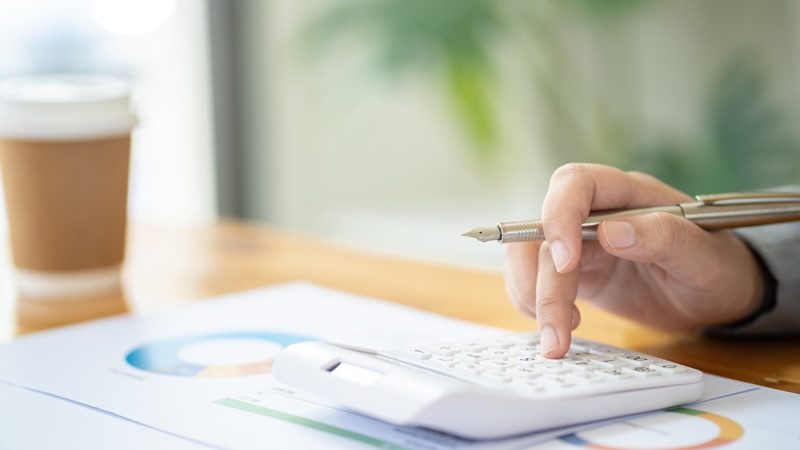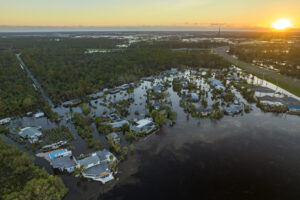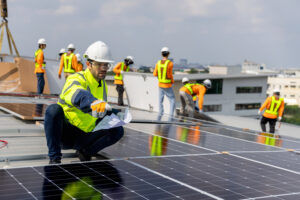Cost vs Longevity: Making the Decision Between Cheaper and Long-lasting Equipment
Property managers are constantly driven by budgetary concerns. However, it is important for decision-makers to be cautious when investing in cheap materials that may result in numerous issues in the future. In this context, we will examine three building systems: LED lighting, HVAC, and solar PV systems. What is the true cost of cheap equipment? We will explore if the cheap investment, in long-term, is worthwhile.
The Cost of Cheap LED Bulbs
Are Cheap LED Bulbs Worth the Savings?
While LED lights are generally more energy-efficient and long-lasting than traditional incandescent or fluorescent lights, there can be some drawbacks to using cheap LED lights. Here are some of the cons of cheap LED lighting:
- Poor quality: Cheap LED lights may be made with lower-quality components. This can lead to poor performance, premature failure, and safety issues. Over time, the need for more frequent replacements, which can offset the initial cost savings of the cheaper lights.
- Inconsistent color: Cheap LED lights may not produce consistent color temperatures, which can result in uneven or unappealing lighting. This can be particularly problematic in applications where color accuracy is important, such as in retail or art display settings.
- Flicker: Some cheap LED lights may have a flickering effect, which can be distracting and uncomfortable for some people. Flickering can also lead to eye strain and headaches, especially when using the lights for long periods.
- Dimming issues: Cheap LED lights may not be compatible with dimming systems or may not dim smoothly. This will lead to uneven or inadequate lighting levels.
In summary, while cheap LED lights may seem like a cost-effective option initially, they can come issues. Encountering a range of quality and performance issues can offset any savings in the long term. Investing in high-quality LED lights can result in better performance, energy savings, and a longer lifespan for the lights.
The Cost of Cheap HVAC Systems
What about HVAC?
The decision to choose a cheaper or more expensive HVAC system depends on several factors. Factors often include your budget, the size and type of your building, and your long-term goals. A cheaper HVAC system may have a lower upfront cost. However, it may also have a shorter lifespan, lower energy efficiency, and higher maintenance costs in the long run. Cheaper systems may also have lower quality components, leading to decreased performance and comfort. Additionally, they may not be equipped to handle the unique heating and cooling needs of your building. This can result in discomfort for building occupants.
On the other hand, a more expensive HVAC system may have a higher upfront cost. In contrast, it may also have a longer lifespan, higher energy efficiency, and lower maintenance costs over time. More expensive systems may also come with advanced features such as zoning capabilities and air quality enhancements. These enhanced benefits can improve the comfort and health of building occupants.
When deciding on an HVAC system, it’s crucial to consider more than just the upfront costs. The total cost of ownership should be taken into account, which includes installation, maintenance, and energy usage expenses. Another factor to consider is the energy efficiency of the building itself. When measuring HVAC efficiency, include the insulation, windows, roofing, and ventilation system, which all contribute to system efficiency.
What are the consequences of a poorly maintained HVAC system breaking down?
HVAC systems are crucial to the comfort and safety of building occupants, and when they experience downtime, it can result in significant financial losses for the building owner or manager. Building occupants may be forced to evacuate the premises or work in uncomfortable conditions. This leads to decreased productivity, lower employee satisfaction, and even health risks.
In addition, during periods of downtime, buildings may be unable to maintain a stable indoor environment. This can result in damage to sensitive equipment such as electronics, furniture, or artwork leading to costly replacements or repairs.
When HVAC systems are down, energy consumption can increase as backup systems or temporary cooling or heating sources are utilized, leading to higher utility bills. Additionally, outdated HVAC systems or HVAC systems in poor condition may not operate at peak efficiency. This lack of efficiency leads to higher energy consumption and increased operating costs even when the system is functioning.
The Cost of Cheap Solar Photovoltaic (PV) Systems
What factors should be taken into account when making a decision between a cost-effective and a premium Solar PV system?
Choosing a cheaper solar PV system may come with some concerns and potential drawbacks. Here are a few to keep in mind:
- Lower efficiency: Cheaper solar PV systems may use lower-quality components that result in lower efficiency and performance. This could mean that your system generates less energy or has a shorter lifespan, which could negate the cost savings associated with choosing a cheaper system.
- Reduced reliability: Cheaper solar PV systems may be less reliable and have a higher risk of failure or malfunction. This could result in increased maintenance costs or even the need to replace the system sooner than anticipated.
- Warranty limitations: Cheaper solar PV systems may come with limited warranties that do not cover all potential issues. This could leave you vulnerable to unexpected repair or replacement costs if something goes wrong with the system.
- Lack of compatibility: Cheaper solar PV systems may not be compatible with all types of roofs or structures, which could limit your options and potentially lead to added costs for installation or modifications.
- Safety concerns: Cheaper solar PV systems may not meet all safety standards and regulations, which could put your property and occupants at risk of injury or damage in the event of a system failure or malfunction.
Properly designed and installed solar PV systems last for over 25 years, with some panels even capable of generating electricity for 30 plus years. As such, it is essential to thoroughly evaluate the possible drawbacks of choosing a cheaper solar PV system and weigh them against any potential cost savings. By doing so, you can ensure that you are making a wise investment in a system that will meet your energy needs and provide long-term value for your business.
Choose the Most Effective Solution
Cost is normally a primary consideration in any project. However, it is important to recognize that initial savings may not be the most cost-effective solution in the long run. Unforeseen and costly consequences may arise, outweighing the apparent savings of the cheaper option. To make informed decisions, decision makers should seek guidance from an experienced energy consultancy firm that can provide them with relevant and comprehensive data. Contact us to see how we can help you choose the right LED lighting, HVAC and Solar PV products.




